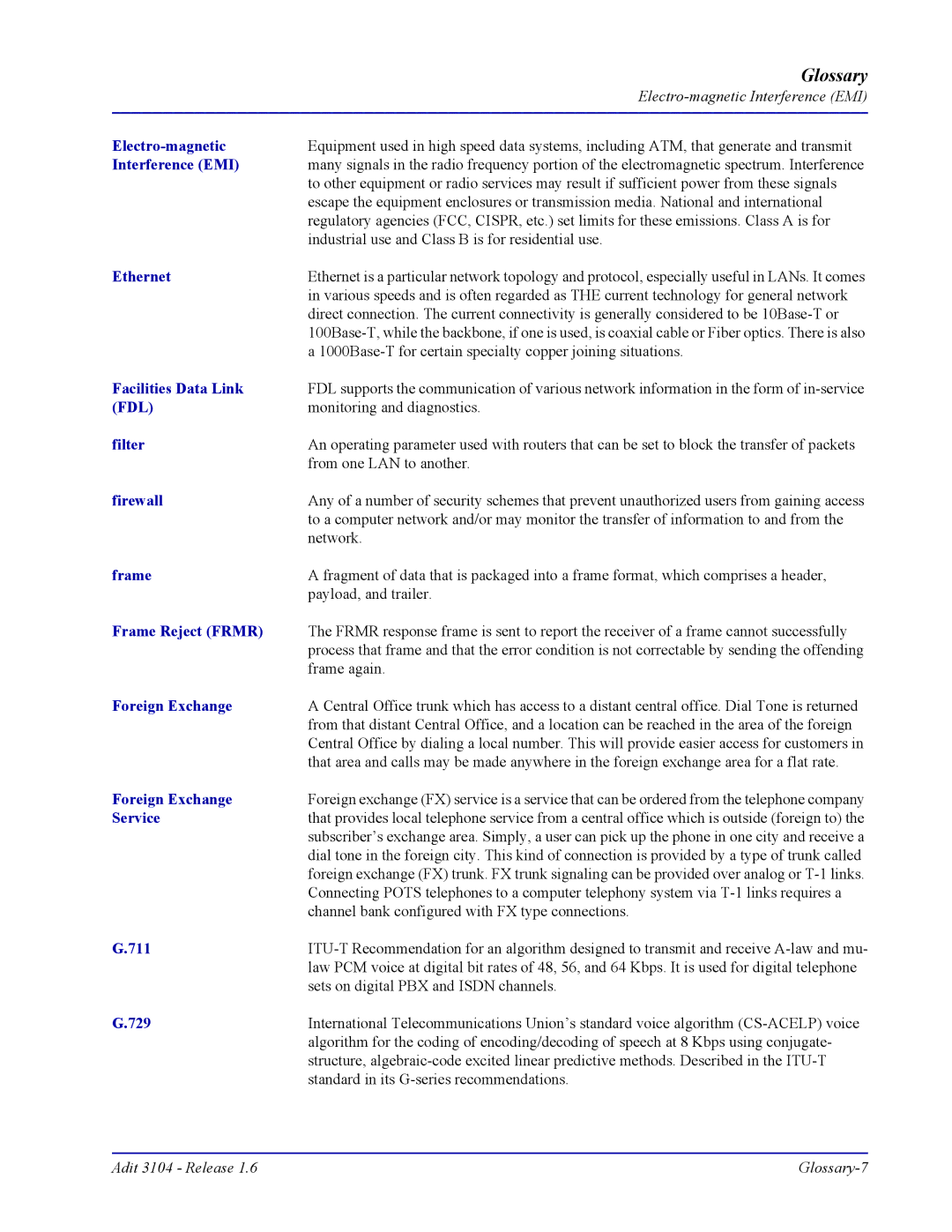| Glossary |
| |
|
|
Equipment used in high speed data systems, including ATM, that generate and transmit | |
Interference (EMI) | many signals in the radio frequency portion of the electromagnetic spectrum. Interference |
| to other equipment or radio services may result if sufficient power from these signals |
| escape the equipment enclosures or transmission media. National and international |
| regulatory agencies (FCC, CISPR, etc.) set limits for these emissions. Class A is for |
| industrial use and Class B is for residential use. |
Ethernet | Ethernet is a particular network topology and protocol, especially useful in LANs. It comes |
| in various speeds and is often regarded as THE current technology for general network |
| direct connection. The current connectivity is generally considered to be |
| |
| a |
Facilities Data Link | FDL supports the communication of various network information in the form of |
(FDL) | monitoring and diagnostics. |
filter | An operating parameter used with routers that can be set to block the transfer of packets |
| from one LAN to another. |
firewall | Any of a number of security schemes that prevent unauthorized users from gaining access |
| to a computer network and/or may monitor the transfer of information to and from the |
| network. |
frame | A fragment of data that is packaged into a frame format, which comprises a header, |
| payload, and trailer. |
Frame Reject (FRMR) | The FRMR response frame is sent to report the receiver of a frame cannot successfully |
| process that frame and that the error condition is not correctable by sending the offending |
| frame again. |
Foreign Exchange | A Central Office trunk which has access to a distant central office. Dial Tone is returned |
| from that distant Central Office, and a location can be reached in the area of the foreign |
| Central Office by dialing a local number. This will provide easier access for customers in |
| that area and calls may be made anywhere in the foreign exchange area for a flat rate. |
Foreign Exchange | Foreign exchange (FX) service is a service that can be ordered from the telephone company |
Service | that provides local telephone service from a central office which is outside (foreign to) the |
| subscriber’s exchange area. Simply, a user can pick up the phone in one city and receive a |
| dial tone in the foreign city. This kind of connection is provided by a type of trunk called |
| foreign exchange (FX) trunk. FX trunk signaling can be provided over analog or |
| Connecting POTS telephones to a computer telephony system via |
| channel bank configured with FX type connections. |
G.711 | |
| law PCM voice at digital bit rates of 48, 56, and 64 Kbps. It is used for digital telephone |
| sets on digital PBX and ISDN channels. |
G.729 | International Telecommunications Union’s standard voice algorithm |
| algorithm for the coding of encoding/decoding of speech at 8 Kbps using conjugate- |
| structure, |
| standard in its |
Adit 3104 - Release 1.6 |
